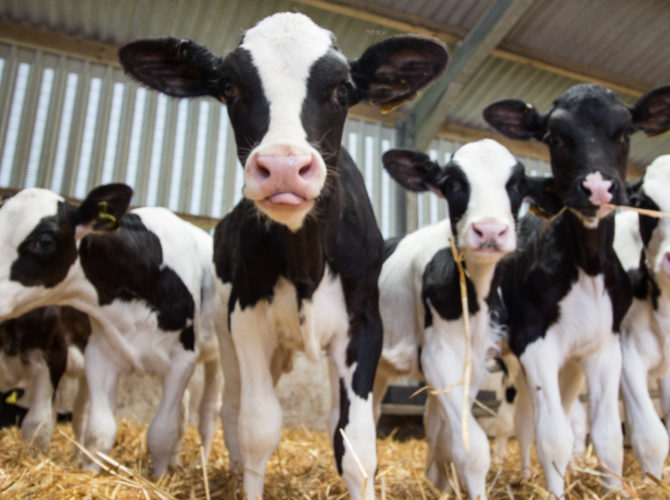Achieve Optimal Heifer Growth Rates To Ensure Long-Term Profitability.
20th June 2022

Reducing the age of first calving (AFC) to 24 months is now the target on most dairy farms, given the associated benefits of reduced rearing costs, higher lifetime yield and increased longevity.
This is still a challenge on many farms as NMR’s most recent key performance indicators show that the average AFC is 26.5 months.
In recent years, significant improvements have been made to feeding the pre – weaned calf. However, momentum can be lost post weaning, when calves are typically turned out or moved to other heifer rearing facilities.
To calve into the milking herd at the target of 24 months, dairy youngstock will need to achieve growth rates of at least 0.8kg/head/day from birth through to calving. Research shows that daily liveweight gain (DLWG) of 1kg/h/d provides the maximum amount of protein deposition.
Feeding heifers to exceed these growth rates will result in excess fat being laid down.
Optimum rearing targets:
• Double birthweight by weaning at 8 weeks.
• Achieve 55 – 60% of mature bodyweight at breeding at 13 – 15 months.
• Arrive at 85 – 90% mature bodyweight at calving.
It is important to know what the mature bodyweight is for individual herds, as this can vary quite substantially depending on breed and genetics.
Frame development is critical for heifers in the initial stages as this is where the weight will be deposited. It is important to remember that frame growth is not linear – 50% is achieved in the first 6 months of life, 25% the following 6 months and the remaining 25% over the following year. If these height increases are missed during the expected time periods, they cannot be recovered through elevated nutrition at a later stage. Sub-optimal frame development can lead to over conditioned heifers, which will have a detrimental impact on fertility and increase the risk of calving difficulties.
Heifers need to be monitored through the whole rearing system to ensure that growth rates are achieved. Sub-optimal nutrition can cause performance to slip which can quite often go undetected until heifers are ready to breed, resulting in the targets being missed and the rearing period extended.
At this time of year, the majority of youngstock will be turned out to grass. This year especially, weather conditions and grass quality have not been favourable. Under these circumstances, grass alone will not be able to support a DLWG of 0.8kg/h/d. Therefore, heifers will require concentrate supplementation of up to 2kg/h/d if they are to meet target growth rates.
Fane Valley Feeds provides a range of calf and heifer feeds, specifically formulated to meet the energy and protein requirements throughout the rearing period. Our nutritionists are able to provide advice on selecting the most suitable feed depending on the type and quality of forage being supplemented.
For more information or technical support with planning your heifer feeding strategy this summer, please contact Laura McConnell on 07976723099 or your local Fane Valley Feeds Sales Representative.

